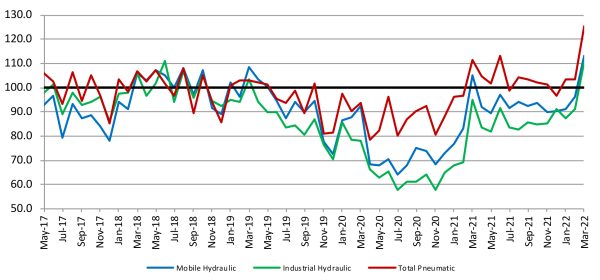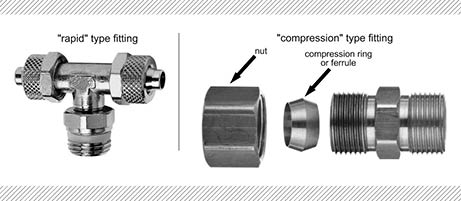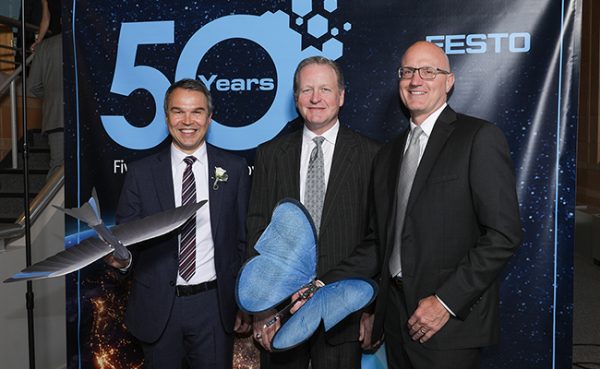No-Leak Zone: The Mighty Mechanical Face Seal
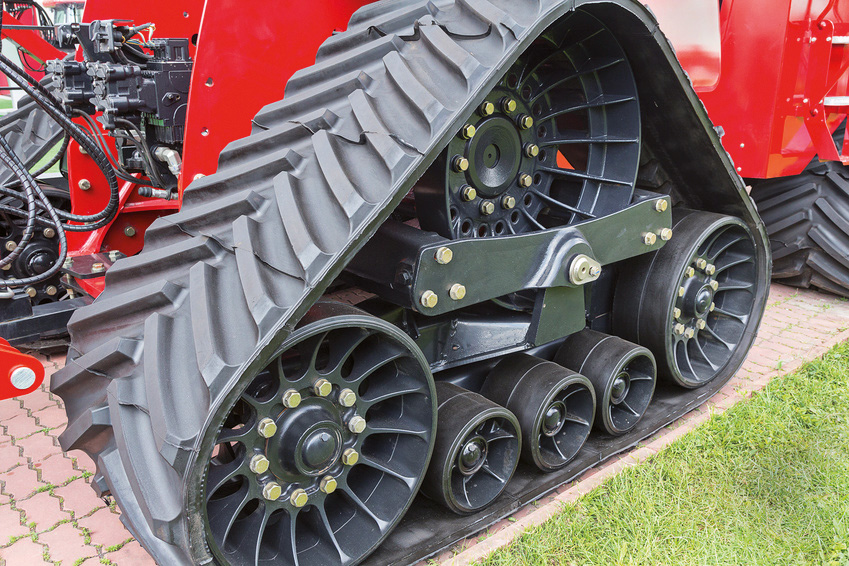 By Michael Cook, Global Segment Director, Off-Highway and Marketing Americas Segment Manager, Fluid Power, and Nicolò Olivetti, Product Manager, Research & Development, Trelleborg
By Michael Cook, Global Segment Director, Off-Highway and Marketing Americas Segment Manager, Fluid Power, and Nicolò Olivetti, Product Manager, Research & Development, Trelleborg
Mechanical face seals, also called lifetime seals, floater seals, duo cone seals, or toric seals, are important to the long-life function of heavy equipment in agriculture, construction, and mining. The performance requirements for this equipment are becoming more stringent because of the trend toward autonomous solutions. Mechanical face seals are specialized types of seals that protect shafts and inner parts against the external environment, which they simultaneously protect by preventing oil leakage from the inner components.
There are two types of mechanical face seals. The first and most common type uses an elastomeric O-ring as a secondary sealing element. The second type uses an elastomer with a diamond-shaped cross section as a secondary sealing element instead of the O-ring. Both types consist of two identical metal seal rings mounted in two separate housings face to face on a lapped seal face. The elastomeric element centers the metal rings within their housings. One half of the mechanical face seal remains static in the housing while the other half rotates with its counter face.
The elastomeric rings perform three functions. First, they generate a uniform axial face load that is enough to avoid the opening of the seals but not high enough to damage the lapped surfaces. Second, they transmit the torque from the rotating half (seat) through the lapped surfaces to the static half. Third, the elastomeric rings guarantee flexibility to the whole system against vibration and misalignment, preventing sliding of the half group (metal ring and O-ring) assembled inside its seat.
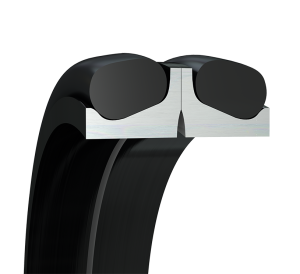 Materials
Materials
The metal rings used in mechanical face seals are typically made of three types of materials: bearing steel, cast iron, or the new Nexus material. Bearing steel, which is usually 100Cr6, is a high-quality material suitable for applications in heavy mud environments, where flexibility against compression is important. However, if there is a need for high peripheral speed, cast iron is the preferred material. Cast iron also has greater resistance to corrosion and wear to provide a long service life. Finally, Nexus is a new spring steel material used to produce mechanical face seals with good performances for construction equipment, in which peripheral speed is relatively low. Nexus mechanical face seals also have more flexibility against mud packing.
For the elastomeric rings used in mechanical face seals, there are a number of material options, including nitrile rubber, hydrogenated acrylonitrile butadiene rubber, silicone, and fluoroelastomers. An experienced seal supplier can help determine the best material for the elastomeric ring based on the demands of the application, such as chemical compatibility and temperature.
Advantages and operating conditions
In muddy and aggressive environments in the agriculture, construction, and mining industries, mechanical face seals are used in applications such as transmissions, gearboxes, and undercarriages. It is advantageous because of its simple, reliable design, long service life, and ease of assembly, as well as its usefulness against vibration and misalignment. All in all, the mechanical face seal provides cost-effective sealing against external dirt, sand, and water.
Protecting and extending the life of large equipment also improves sustainability by reducing the volume of damaged parts and components that end up in landfills.
However, mechanical face seals require certain operating conditions and have some limitations. The shaft seal is pressure-free under normal operating conditions, and the mechanical face seal is suitable to hold up to 0.3 MPa (43.5 psi) of differential pressure. They are unsuitable for applications subject to maximum pressure and speed simultaneously. It’s strongly suggested during the first 10 hours of rotation to work with peripheral speeds not exceeding 1 m/sec (see chart).
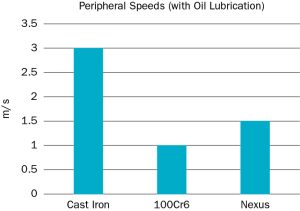
Additionally, lubrication, which builds a thin film between the sliding faces by a capillary effect and centrifugal force, is always necessary. This serves two important functions: it reduces the friction between the seal face and the mating faces, and it acts as a cooling agent for the complete shaft and housing. The best results regarding wear and service life are achieved with oil lubrication; grease lubrication is possible but needs special attention, mainly relating to peripheral speed. To facilitate this, it is necessary to have a minimum oil level of one-third of the seal’s inside diameter and a full level for grease.
Ultimately an experienced seal supplier can make knowledgeable recommendations regarding the right solution for the application and provide guidance for original equipment manufacturers’ needs. Trelleborg Sealing Solutions has facilities and equipment to run various tests and analyses, including for corrosion and static, as well as finite element analysis and elastomeric ring analysis. Trelleborg also provides design support for installation tools and offers e-learning courses focused on the proper installation of mechanical face seals.
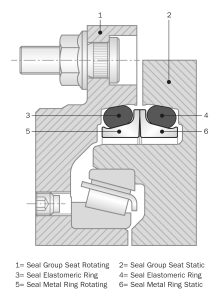 Mechanical face seals are heavy-duty seals for extremely harsh environments. They are specifically engineered for rotating applications in extremely arduous environments in which they withstand severe wear and prevent ingress of harsh and abrasive external media. As technology plays a bigger role in agriculture, construction, and mining, equipment will be expected to perform more efficiently and consistently than ever before, especially for global OEMs that build equipment designed for varying terrain. Mechanical face seals play a critical role in applications such as transmissions, gearboxes, and undercarriages because of their simple, reliable design, long service life, and ease of assembly. With two types of mechanical face seals that can be made with three types of materials, it’s beneficial to partner with an experienced component manufacturer that can help identify the right mechanical face seal for the job.
Mechanical face seals are heavy-duty seals for extremely harsh environments. They are specifically engineered for rotating applications in extremely arduous environments in which they withstand severe wear and prevent ingress of harsh and abrasive external media. As technology plays a bigger role in agriculture, construction, and mining, equipment will be expected to perform more efficiently and consistently than ever before, especially for global OEMs that build equipment designed for varying terrain. Mechanical face seals play a critical role in applications such as transmissions, gearboxes, and undercarriages because of their simple, reliable design, long service life, and ease of assembly. With two types of mechanical face seals that can be made with three types of materials, it’s beneficial to partner with an experienced component manufacturer that can help identify the right mechanical face seal for the job.
Case Study: Gearbox Manufacturer
A gearbox manufacturer was looking to meet certain cost reduction goals set out by its end customer. Trelleborg assisted them in gaining approval for a mechanical face seal in the drive system of a compact track loader. The project started with sample manufacturing of the mechanical face seal, and Trelleborg experts designed the seal with cast iron metal rings and hydrogenated acrylonitrile butadiene rubber elastomeric rings suited for a wide temperature range.
To complete the validation, Trelleborg and the gearbox manufacturer conducted several required tests, including a 12-week corrosion test and two dairy-farm tests in which the mechanical face seal was assembled in the gearbox of the compact track loader and operated in the field. Trelleborg’s mechanical face seal completed the tests successfully and met the criteria of the customer and its end user.
Innovation Drives Requirements
The trend toward mechanized IoT implementation, intelligent remote-control systems, and automation for heavy off-highway equipment in the agriculture, construction, and mining industries means safety and efficiency are more important than ever. These advancements enable heavy equipment to operate autonomously and work in increasingly harsh environments. To ensure the equipment runs efficiently and reliably with minimal downtime in these new frontiers, all components, including the mechanical face seals, need to withstand both rough terrain and temperatures that can range wildly from one continent to another. This is especially important for OEMs that manufacture and market equipment globally.


